Needles of Black History
by Amber Rivard
The “Needles of Black History” exhibit has an “I Can’t Breathe” section. The display shows photos of children and adults around George Floyd, who was murdered by a police officer in Minneapolis, Minnesota. The presentation suggests that the lives of the people pictured with Floyd could, like him, be cut short for being at the wrong place at the wrong time.
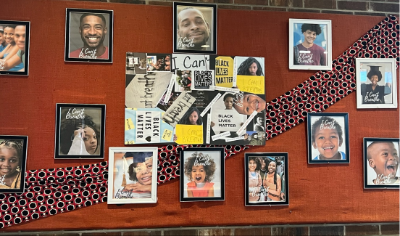
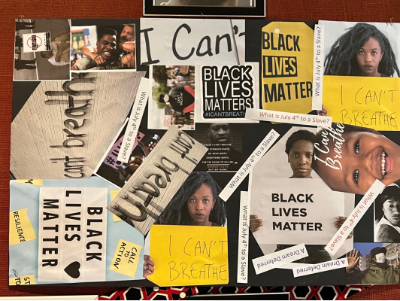
"I Can't Beathe"
Photos by Amber Rivard
Cape Cod Community College’s (4C’s) “Needles of Black History” is an exhibit located in the school library that promotes awareness. It will be extended until the end of March. The display is presented on all three floors of the library.
“The birth of the ‘Needles of Black History’ was originally born out of the larger exhibit that my partner and I created while working at the Easthampton High School,” says Asher Hamilton, coordinator of student life and fitness. “The ‘Needles of Black History’ exhibit speaks to how needles weave fabric together to make a connection to the idea of wholeness.”
“One of the things we put here is: What is July 4 to a slave?” Hamilton says. “It’s also a deferred dream. It means that there's a promise to African Americans through the 15th Amendment that has never been delivered. Slavery is no longer. We can vote. We have the freedom to be considered a United States citizen. But what is July the Fourth to a Black person if this country doesn't even accept you as a human? Why should I celebrate your holiday? A dream deferred means a promise was made, but the promise was never delivered. All these beautiful faces (in the display) are individuals whose life could be cut short at a moment’s notice.”
Across from the “I Can’t Breathe” section, there is a section devoted to some of history’s Black figures and their poetry, including a more recent historical poem from Amanda Gorman that was presented at the inauguration of Joe Biden.
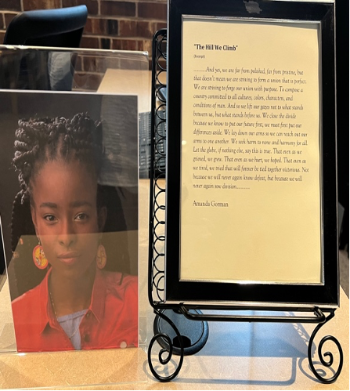
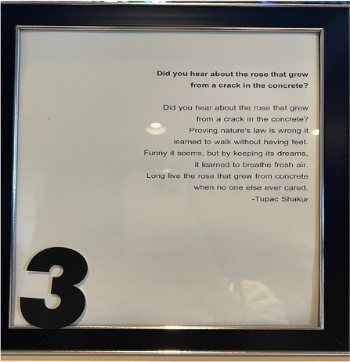
Poetry by historical Black figures
Photos by Amber Rivard
“This was a huge step for a young African American woman in this country because we know not only are Black men mistreated, but we also understand that there's a stereotype that goes with Black femininity,” Hamilton says of Gorman. “She has gone on to publish a lot more, but it was almost like her kind of inauguration, too, into the world of art.”
The third floor of the library shows the evolution of African Americans in films, the Jim Crow laws, and how film fueled the Ku Klux Klan. African Americans in films were degraded and made fun of, which influenced how society treated and saw them.
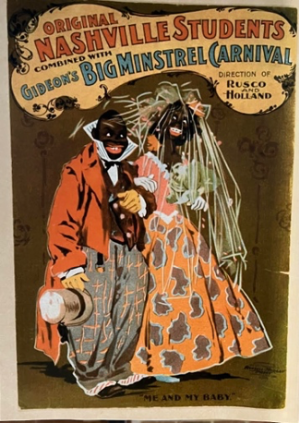
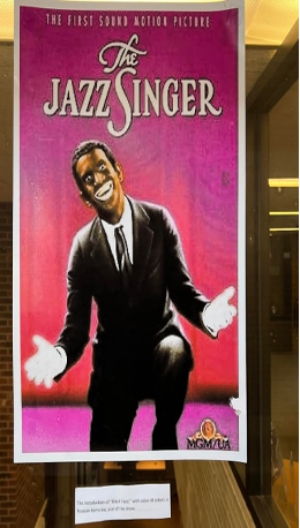
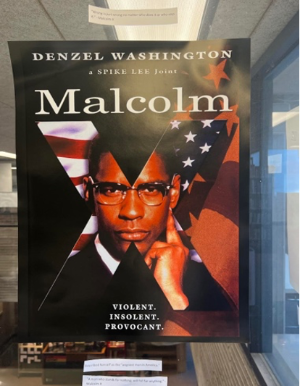
The evolution of portraying Black lives in movies
Photos by Amber Rivard
“‘The Birth of a Nation,’ which was a very big Hollywood hit, was part of the reason that the Ku Klux Klan became so popular. It actually brought in how they started burning the crosses. Before that, they never did that,” says Christina Silva-Simpson. Her specialty is African Americans and Hollywood.
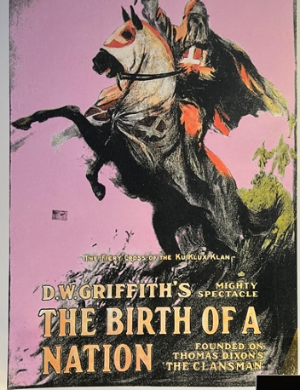
The Birth of a Nation
Photo by Amber Rivard
The first floor of the library is a historical timeline of Black history, which involved slavery, segregation, broken promises, and their efforts to keep Black people illiterate so white people could remain in power.
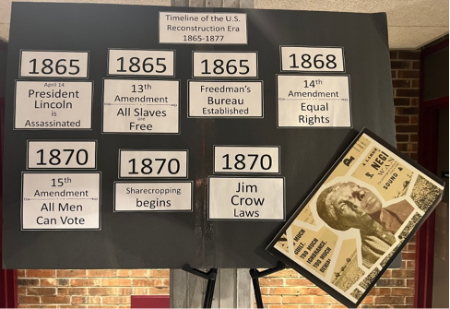
Timeline of Black history
Photo by Amber Rivard
Viewing is open during library hours; 8 a.m. to 8 p.m. Mondays through Thursdays; 8 a.m. to 4:30 p.m. Fridays; 9 a.m. to 1 p.m. Saturdays; and 1 p.m. to 5 p.m. Sundays.
For more information: [email protected].
Categories: Featured, Around Campus, Events, Student Life